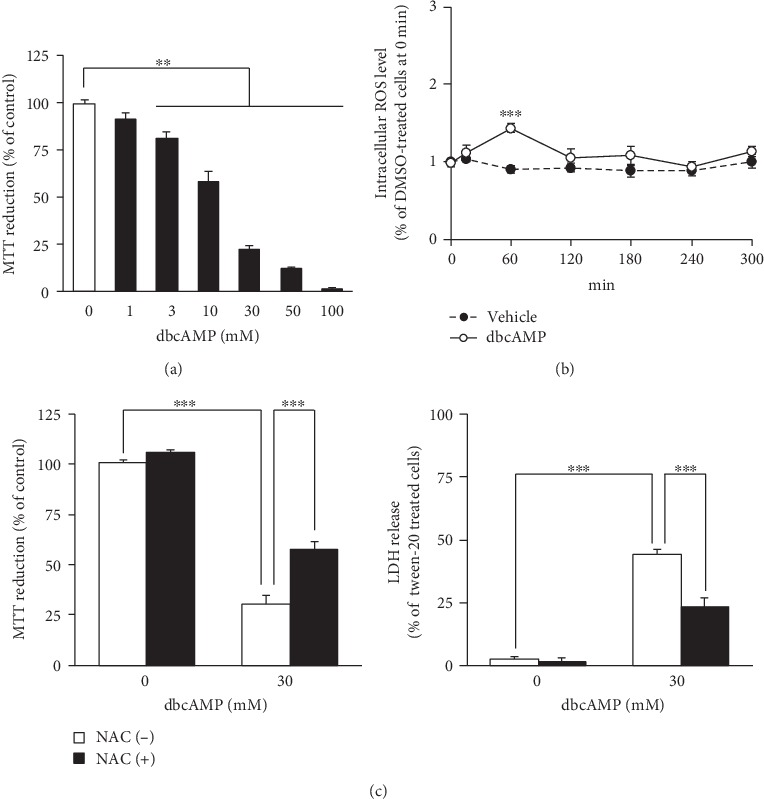Figure 8.

Exogenous application of cAMP analog induces cell death and facilitates intracellular ROS generation in differentiated NSC-34 cells. (a) Differentiated NSC-34 cells were incubated with various concentrations of dbcAMP or vehicle (distilled water) for 48 h. The viability of the cells was assessed by the MTT reduction assay. Graph shows effect of dbcAMP on MTT reduction activity in these cells. The results are expressed as a percentage relative to the control (nontreated) cells. Values represent means ± S.E.M. for four separate experiments. ∗∗p < 0.01. (b) The intracellular ROS levels were measured over time by monitoring DCF fluorescence intensity in differentiated NSC-34 cells incubated in vehicle (distilled water) or in the presence of dbcAMP (30 mM). Graph shows time courses of DCF fluorescence intensity in the treated cells. Values represent means ± S.E.M. for four separate experiments. ∗∗∗p < 0.001 compared to vehicle-treated cells at each time point. (c) Differentiated NSC-34 cells were exposed to vehicle (distilled water) or 3 mM NAC for 4 h, and then the cells were treated with vehicle (distilled water) or 30 mM dbcAMP for 48 h. The viability of the cells was assessed by the MTT reduction assay and LDH assay. Graphs show effect of dbcAMP on MTT reduction activity (left) and LDH release (right) in these cells. Results are expressed as a percentage relative to the control (nontreated) cells. Values represent means ± S.E.M. for four separate experiments. ∗∗∗p < 0.001.
